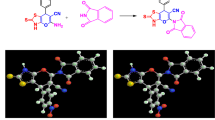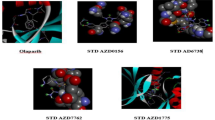Abstract
SOMATIC mutation has been considered a likely initiating step in chemical carcinogenesis1–3, chiefly because of the close correlation between the mutagenic and carcinogenic activity of various chemicals4–6. Study of cells from patients with disease predisposing to a high incidence of cancer, such as xeroderma pigmentosum and Fanconi's anaemia, has suggested that defective DNA repair is correlated with this predisposition to malignant transformation. When cells are transformed by 3-methylcholanthrene7, 4-nitroquinoline-1-oxide (4NQO)8, or X irradiation9–11, division is necessary soon after treatment to fix the transformation: if treated cells are unable to grow the transformation is not fixed. These results could be explained if DNA damage induced by a carcinogen is converted into a stable and replicable structural change only by means of DNA replication before the intervention of error-free repair mechanisms. The model of mutagenesis12–14 based on evidence obtained with micro-organisms suggests that errors introduced by an error-prone postreplication repair mechanism are the principal source of mutation. Furthermore, caffeine inhibits “postreplication repair” (presumably an error-prone mechanism) but not excision repair (presumably error-free) in rodent cells15–19. I now report that caffeine reduces the transformation frequency of mouse cells treated with 4NQO. This supports the somatic mutation theory of cell transformation.
This is a preview of subscription content, access via your institution
Access options
Subscribe to this journal
Receive 51 print issues and online access
$199.00 per year
only $3.90 per issue
Buy this article
- Purchase on SpringerLink
- Instant access to full article PDF
Prices may be subject to local taxes which are calculated during checkout
Similar content being viewed by others
References
Burnet, M., Br. med. J., 1, 779–786 (1957).
Burch, P. R. J., Proc. R. Soc., B 162, 223–262 (1965).
Ashley, D. J. B., Br. J. Cancer, 23, 313–328 (1969).
Ames, B. N., in Chemical Mutagens, 1 (edit. by Hollaender, A.), 267–282 (Plenum, New York, 1971).
Miller, E. C., and Miller, J. A., in Chemical Mutagens, 1 (edit. by Hollaender, A.), 83–119 (Plenum, New York, 1971).
Ames, B. N., Durston, W. E., Yamasaki, E., and Lee, F. D., Proc. natn. Acad. Sci. U.S.A., 70, 2281–2285 (1973).
Kakunaga, T., in Topics in Chemical Carcinogenesis (edit. by Nakahara, W., Takayama, S., Sugimura, T., and Odashima, S.), 32–34 (University of Tokyo Press, Tokyo, 1972); Cancer Res. 35, 1637–1642 (1975).
Kakunaga, T., Int. J. Cancer, 14, 736–742 (1974).
Borek, C., and Sachs, L., Nature, 210, 276–287 (1966).
Borek, C., and Hall, E., Nature, 243, 450–453 (1973).
Terzaghi, M., and Little, J. B., Nature, 253, 548–549 (1975).
Witkin, E. M., A. Rev. Genet., 3, 525–552 (1969); in Mutation as Cellular Process, Ciba Foundation Symp. (edit. by Wolstenholm, G. E. W., and O'Connor, M.), 36–49; Mutation Res., 8, 9–14 (1969).
Kondo, S., Ichikawa, H., Iwo, K., and Kato, T., Genetics, 66, 187–217 (1970).
Kondo, S., in Advances in Biophysics, 7 (edit. by Kotani, M.), 91–162 (University of Tokyo Press, Tokyo, 1975).
Cleavers, J. E., and Thomas, G. H., Biochem. biophys. Res. Commun., 36, 203–208 (1969).
Fujiwara, Y., and Kondo, T., Biochem. biophys. Res. Commun., 47, 557–564 (1972).
Trosko, J. E., and Chu, E. H. Y., Chem. Biol. Interactions, 6, 317–332 (1973).
Cleaver, J. E., Adv. Radiat. Biol., 4, 1–75 (1974).
Lehmann, A. R., and Kirk-Bell, S., Mutat. Res., 26, 73–82 (1974).
Kakunaga, T., Int. J. Cancer, 12, 463–473 (1973).
Zajdela, F., and Latarjet, R., C. r. hebd. séanc. Acad. Sci., 277, 1073–1076 (1973).
Donovan, P. J., and DiPaolo, J. A., Cancer Res., 34, 2720–2727 (1974).
Kihlman, B. A., Mutat. Res., 26, 53–71 (1974).
Kakunaga, T., Igaku No Ayumi, 84, 799–804 (1973).
Bertram, J. S., and Heidelberger, C., Cancer Res., 34, 524–537 (1974).
Cleaver, J. E., and Bootsma, D., A. Rev. Genet. (in the press).
Author information
Authors and Affiliations
Rights and permissions
About this article
Cite this article
KAKUNAGA, T. Caffeine inhibits cell transformation by 4-nitroquinoline-1-oxide. Nature 258, 248–250 (1975). https://doi.org/10.1038/258248a0
Issue date:
DOI: https://doi.org/10.1038/258248a0



